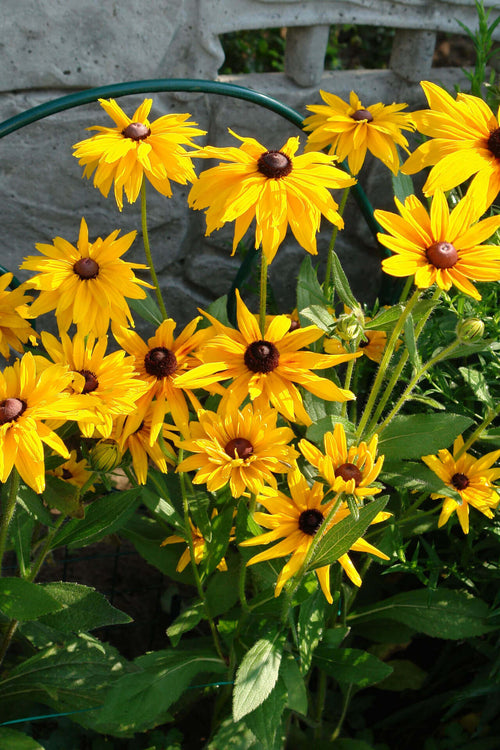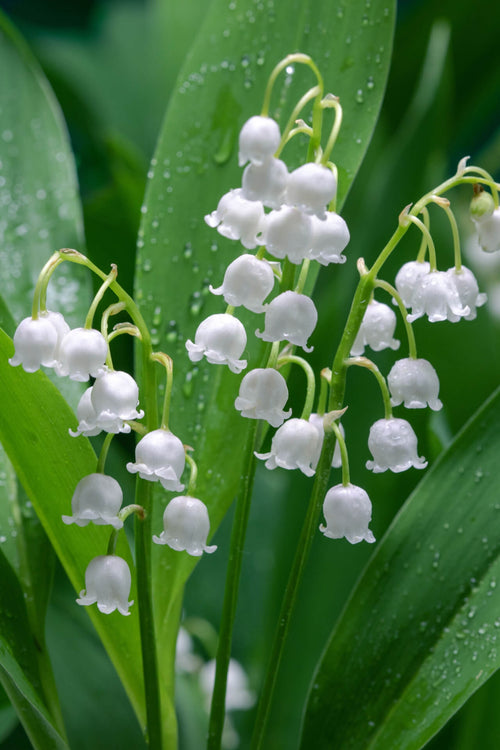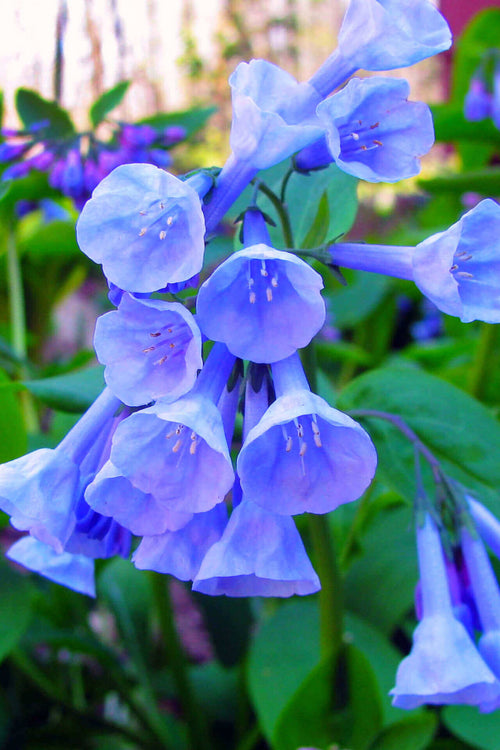Creating a vibrant and colorful garden that thrives under the full sun requires carefully selecting plants that can withstand intense heat and sunlight.
Perennial plants, known for their resilience and ability to return year after year, are excellent choices for such conditions. This article explores the ten best full-sun perennial plants that can add beauty, texture, and longevity to your garden landscape.
Lavender
Lavender is renowned for its fragrant, silvery foliage and delicate spikes of purple flowers. Thriving in full sun, this perennial plant adds visual appeal and attracts pollinators like bees and butterflies. Lavender's calming scent makes it a popular choice for aromatherapy and sachets. Its drought tolerance and low-maintenance nature make it a perfect fit for sunny gardens with well-draining soil.
Black-eyed Susan
Black-eyed Susan is a cheerful perennial with vibrant yellow or orange daisy-like flowers with dark centers. Its long blooming season, lasting from mid-summer through fall, adds color to any garden. This hardy plant is drought tolerant once established and requires minimal care. It's an excellent choice for attracting birds and beneficial insects to your garden.
Sedum
Sedums, commonly called stonecrop, are versatile perennial plants known for their succulent leaves and star-shaped flowers. With various species and cultivars available, sedums offer a range of colors. These plants thrive in full sun, ideal for rock gardens, borders, and containers.
Daylily
Daylilies are prized for their stunning blooms that last only a day but are produced abundantly over several weeks. Available in various colors and sizes, these perennials can serve as focal points or fillers in your garden. They are well-suited for full sun conditions and can tolerate a range of soil types. Daylilies are also relatively low-maintenance, requiring periodic deadheading and division.
Russian Sage
Russian Sage is a drought-tolerant perennial with silvery gray foliage and spikes of lavender-blue flowers. It's airy appearance and aromatic leaves make it an attractive addition to sunny borders and landscapes. Russian Sage is known for its ability to thrive in poor, dry soils, and its long blooming period extends from mid-summer through fall.
Coneflower
Coneflowers are iconic full-sun perennials with striking, daisy-like flowers and distinctive cone-shaped centers. Their petals come in various colors, including pink, purple, and white. Aside from their ornamental value, coneflowers are also valued for their potential immune-boosting properties. These hardy plants are well-suited for attracting pollinators and adding a touch of wildflower beauty to your garden.
Blanket Flower
Blanket flowers are known for their bold and vibrant blooms resembling a Southwestern blanket's colors. These daisy-like flowers are in warm red, orange, and yellow shades. Blanket flowers thrive in full sun and well-draining soil and are remarkably drought-tolerant once established. Their long blooming season makes them a staple for summer gardens.
Coreopsis
Coreopsis, also known as tickseed, is a cheerful and easy-to-grow perennial with bright, daisy-like flowers in shades of yellow, orange, and red. These plants add color to the garden and are often used in borders and containers. Coreopsis can tolerate dry conditions and is a favorite among gardeners.
Lily of The Valley
Gardening enthusiasts constantly seek perennials that can thrive in full sun while maintaining their captivating beauty. The Virginia Bluebells (Mertensia virginica) and the Lily of the Valley (Convallaria majalis) are remarkable options. These sun-loving perennials bring a burst of color to your garden and provide an alluring aroma that can transform any outdoor space. This article delves into the unique characteristics, cultivation tips, and the delightful impact of these plants in gardens.
Virginia Bluebells:
A Symphony of Blue Elegance: Virginia Bluebells, scientifically known as Mertensia virginica, are native to eastern North America. Their bell-shaped, pendulous flowers feature a mesmerizing transition of colors, starting from soft pink buds that transform into brilliant sky-blue blossoms as they mature. The blooms are grouped in loose clusters atop sturdy, arching stems, creating a delicate and graceful appearance.
One of the unique qualities of Virginia Bluebells is their adaptability to different light conditions. While they are often associated with woodland settings and partial shade, they can also thrive in full sun with proper care. When grown in sunnier locations, these perennials exhibit more compact growth, producing stronger stems that can withstand the elements.
Best Sun Perennial Conclusion
Selecting the right perennial plants is essential for creating a vibrant and long-lasting garden that thrives under the full sun. The ten perennials discussed in this article, including lavender, black-eyed Susan, sedum, daylily, Russian sage, coneflower, blanket flower, coreopsis, yarrow, and salvia, offer a diverse range of colors, shapes, and textures to enhance your garden's beauty. Whether aiming for a pollinator-friendly space, a water-wise landscape, or simply a burst of color, these full-sun perennials will surely bring life and vitality to your outdoor environment for years.





















































